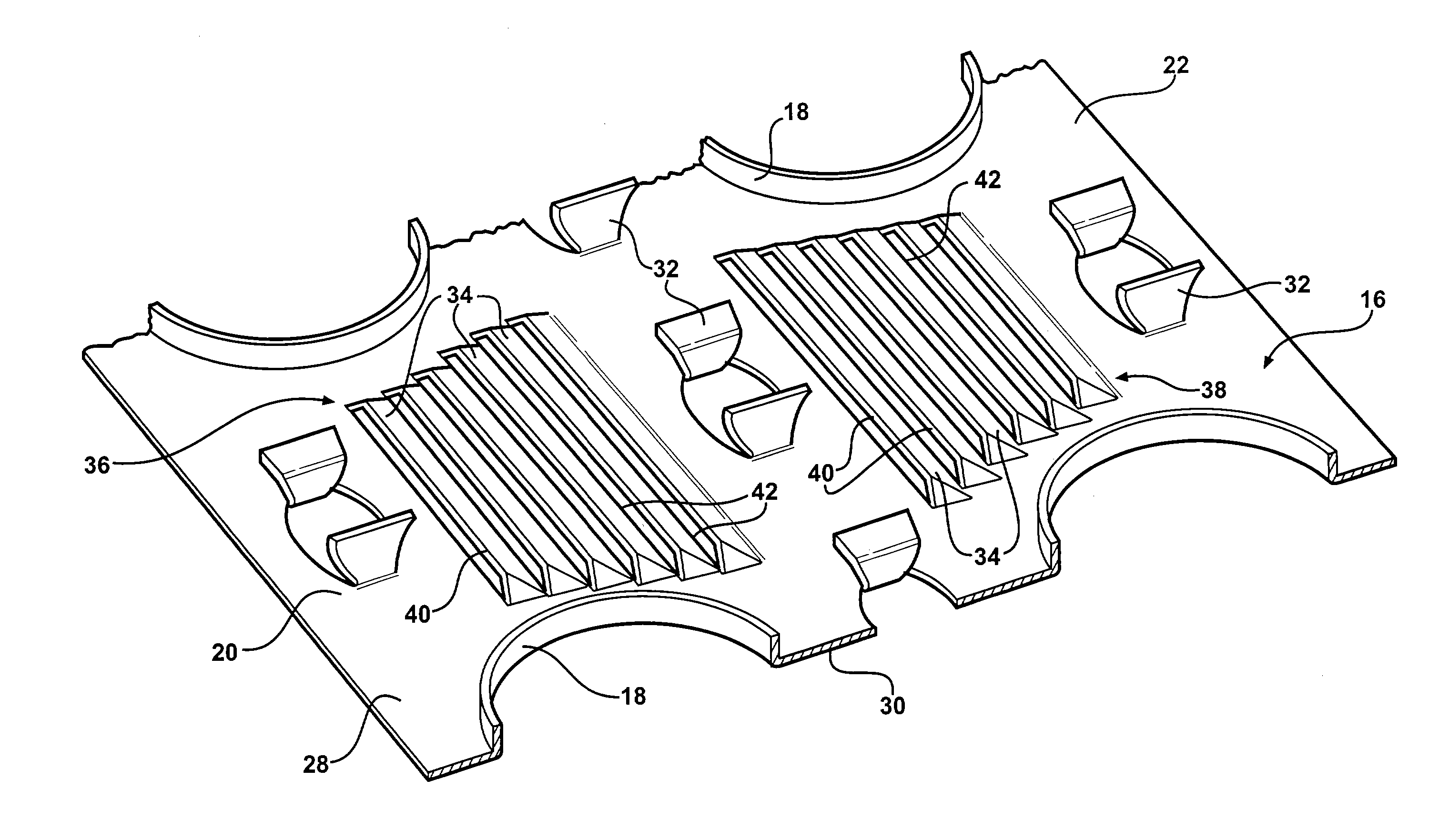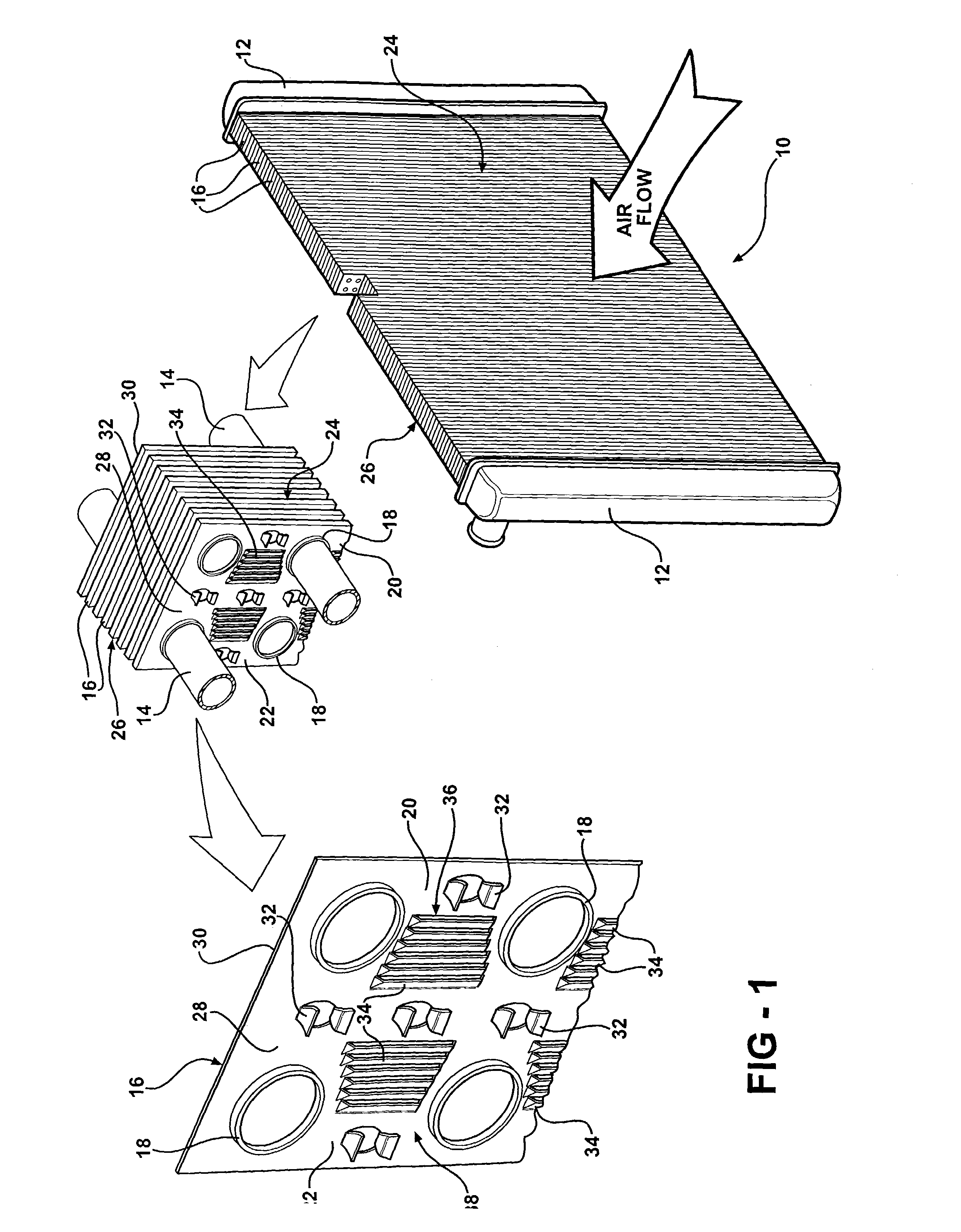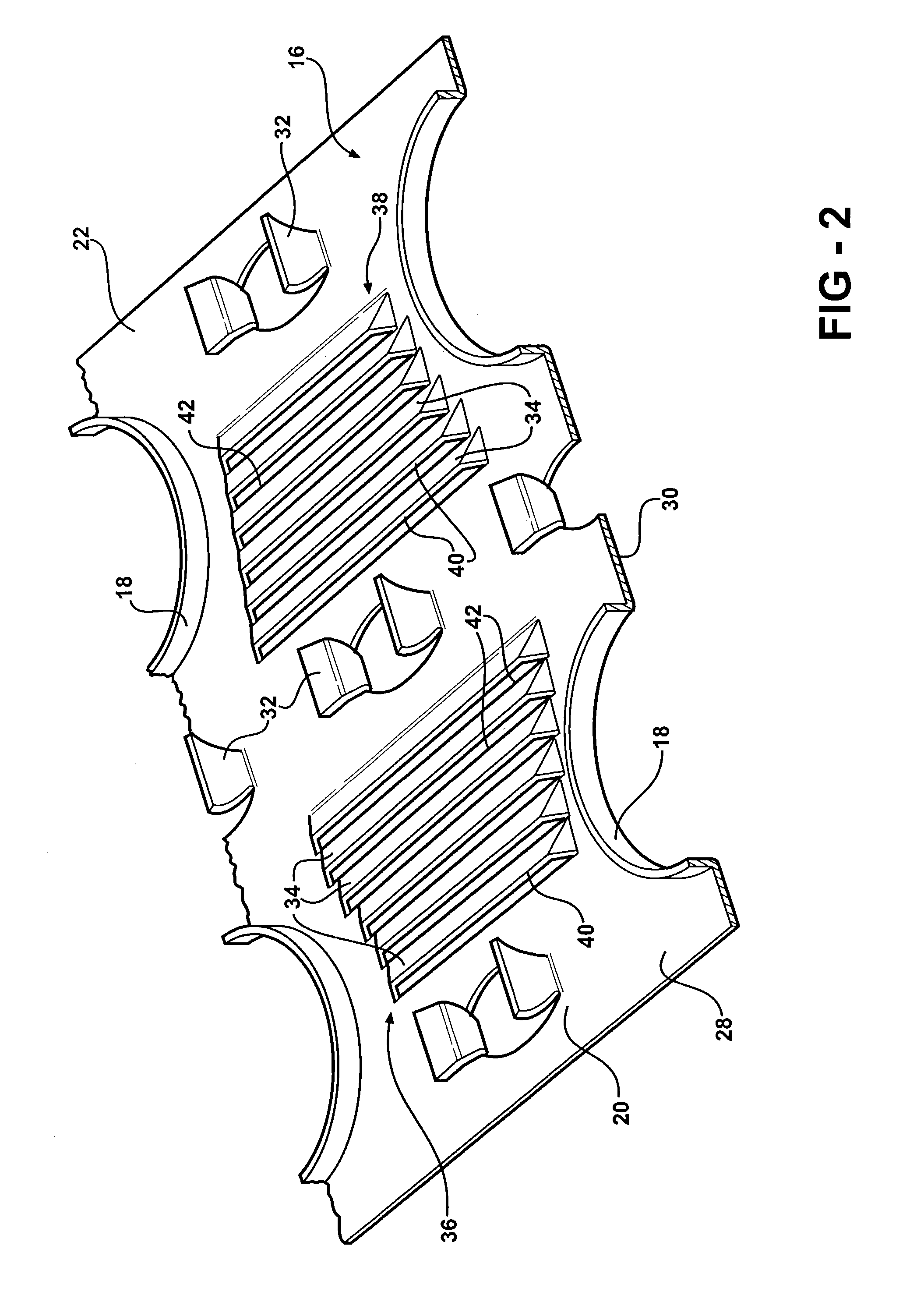Fin-and-tube type heat exchanger
a heat exchanger and fin-and-tube technology, which is applied in the field of fin-and-tube heat exchangers, can solve the problems of increasing the pressure drop across the fins as the penalty paid for the increased heat transfer, complex and expensive manufacturing of louvers, and not optimizing the heat transfer, so as to reduce the air pressure drop, increase the heat transfer, and optimize the effect of heat transfer
- Summary
- Abstract
- Description
- Claims
- Application Information
AI Technical Summary
Benefits of technology
Problems solved by technology
Method used
Image
Examples
Embodiment Construction
[0014]Referring to the Figures, wherein like numerals indicate like or corresponding parts throughout the several views, a heat exchanger is generally shown at 10 in FIG. 1. The heat exchanger 10 includes a pair of manifolds 12 and a plurality of tubes 14. The tubes 14 are interconnected at opposite ends to the manifolds 12 to pass coolant between the manifolds 12. The heat exchanger 10 also includes a plurality of fins 16 disposed adjacent to each other. The plurality of tubes 14 pass through the plurality of fins 16 for interconnecting the fins 16 together and mounting the fins 16 to the heat exchanger 10. In particular, the fins 16 define collars 18 with the tubes 14 being received within and fixedly secured to the collars 18. This general configuration of a heat exchanger defines what is known in the art as a fin-and-tube type heat exchanger. It should be appreciated that the exact configuration of the manifolds 12, tubes 14, and fins 16, could be of any suitable design without ...
PUM
 Login to View More
Login to View More Abstract
Description
Claims
Application Information
 Login to View More
Login to View More - R&D
- Intellectual Property
- Life Sciences
- Materials
- Tech Scout
- Unparalleled Data Quality
- Higher Quality Content
- 60% Fewer Hallucinations
Browse by: Latest US Patents, China's latest patents, Technical Efficacy Thesaurus, Application Domain, Technology Topic, Popular Technical Reports.
© 2025 PatSnap. All rights reserved.Legal|Privacy policy|Modern Slavery Act Transparency Statement|Sitemap|About US| Contact US: help@patsnap.com



